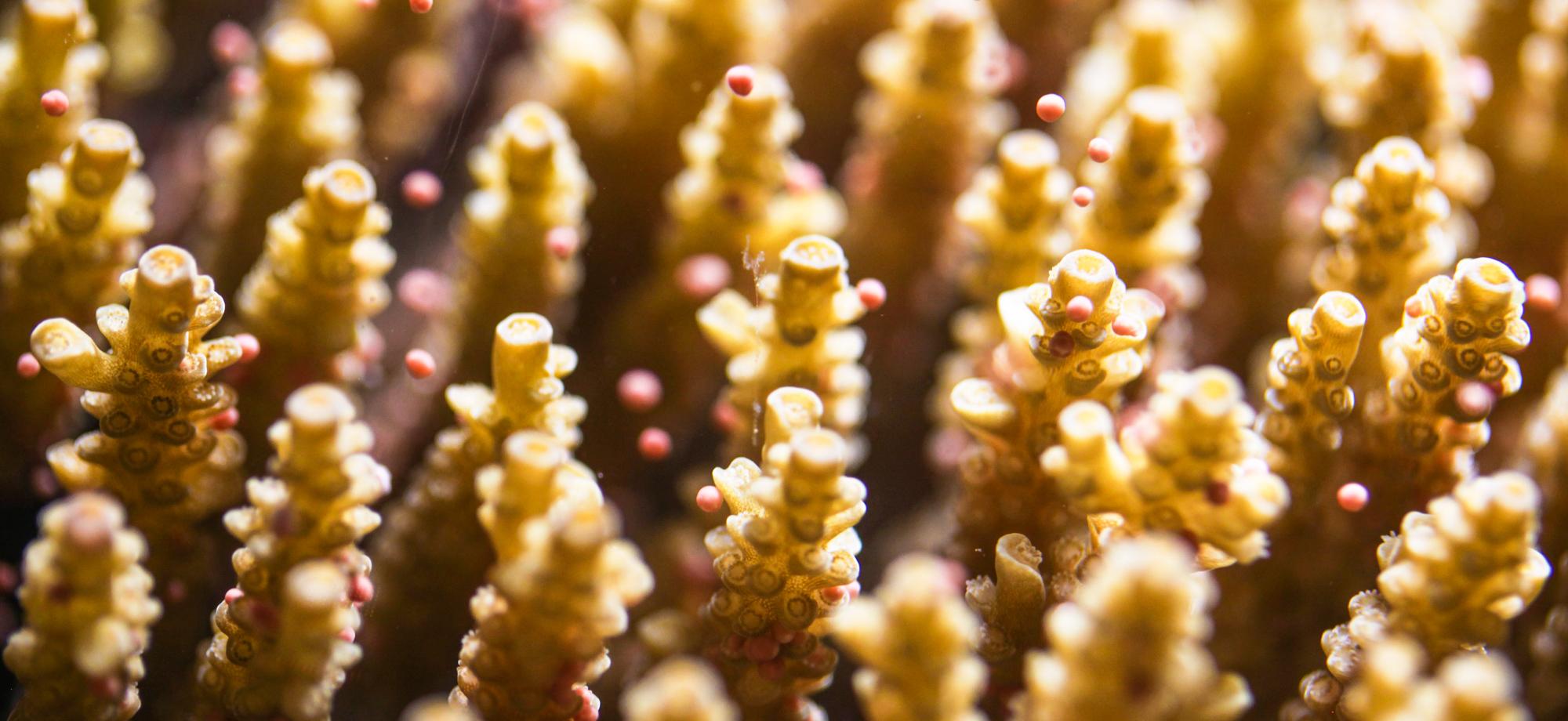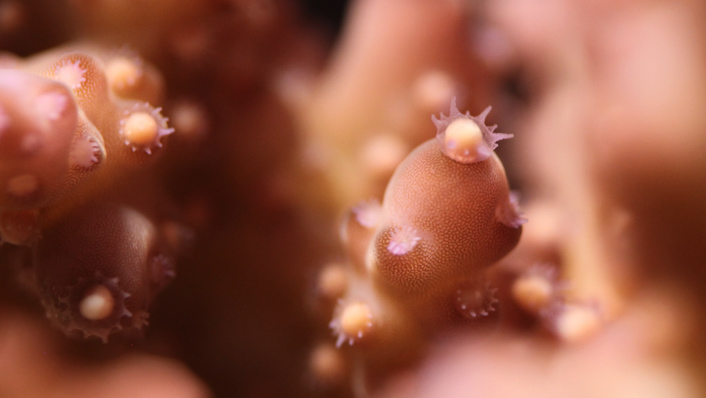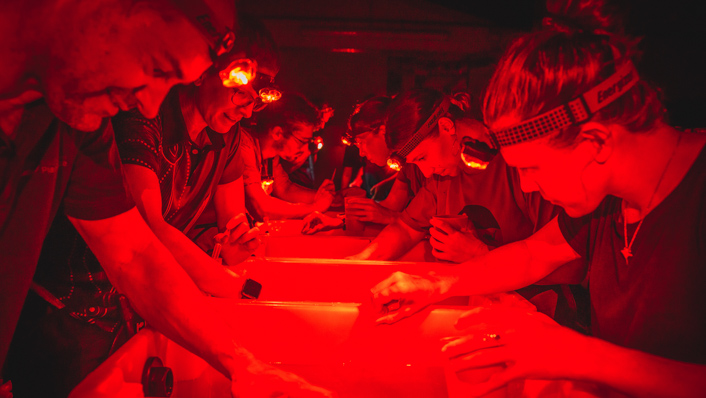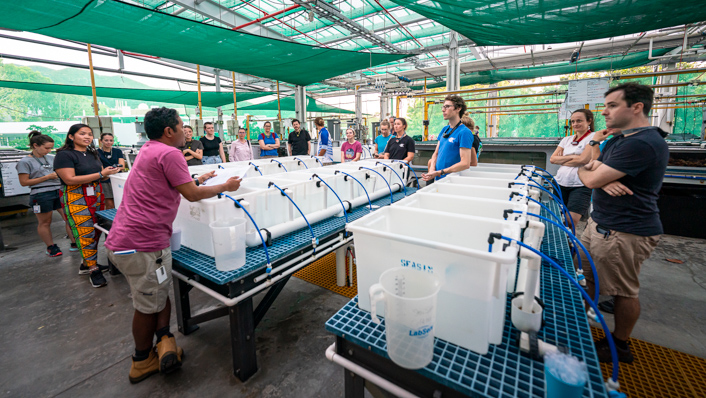The Great Barrier Reef annual mass spawning is an important time of year when corals and other reef animals reproduce. It is one of the most extraordinary natural phenomenon on the planet.
Corals, guided by seasonal warming, moon phases and tides, release egg and sperm into the water around the same time to create new corals. The event usually takes place on a handful of nights following the full moons in October and November, but sometimes in December. It occurs mostly under the cover of night.
Coral spawning provides a narrow window of opportunity for recovery on the Reef. This is also a narrow window for the scientists working to understand how reefs can resist and recover from disturbances, and how we can help.
Spawning in AIMS' National Sea Simulator
Coral spawning creates a hive of activity in AIMS' National Sea Simulator (SeaSim), where our scientists and their collaborators study this crucial early lives of corals. Prior to spawning, corals are brought from the Reef to the SeaSim, where they spawn at the same time as those out on the Reef.
Currently, AIMS scientists and collaborators focus their coral research on reef recovery, adaptation and restoration for a warming future. This includes investigations on breeding heat-tolerant corals, and new approaches to coral aquaculture to scale up restoration efforts in the future.
Other animals which reproduce around the same time of year are also studied in SeaSim, including crowns-of-thorns starfish.
Reef spawning research in 2025
Below are just some of the spawning projects underway at AIMS in 2025. Many take place in the National Sea Simulator, and continue into the summer and beyond as the young corals mature.
Developing approaches to large-scale coral aquaculture
Investigating adaptation and breeding heat tolerant corals
- Coral hybridisation
- Gene editing technologies to understand and protect coral reefs
- Boosting coral resilience with microalgal symbionts
- Tracking coral genetics and inherited traits
Bringing approaches into the field
- Pilot deployments for large-scale reef restoration interventions
- Indigenous Futures - building capacity for Traditional Owners in reef restoration
- Boats4Coral
- Effects of macroalgae on coral seeding devices
Crown-of-thorns starfish
Reef science in a warming world
AIMS is involved in major projects focused on helping coral reefs survive climate change.
Our scientists are:
- continuing our research to understand the natural capacity of corals and reefs to adapt to warming oceans,
- investigating a number of ways we can enhance corals’ ability to resist bleaching, and
- developing methods to scale up and fast track coral recovery.
Learn more about Australian Government-funded Reef Restoration and Adaptation Program, and the Australian Coral Reef Resilience Initiative.
Meet the team
AIMS' research in coral spawning and the early life history of corals and other tropical invertebrates has been underway for over two decades. Our world-class team have contributed significantly to the fundamental understanding of coral reproduction and adaptation, and their efforts are now geared to research on how we can help coral reefs into a warming future.
Below are some of AIMS' lead scientists involved in spawning research.




